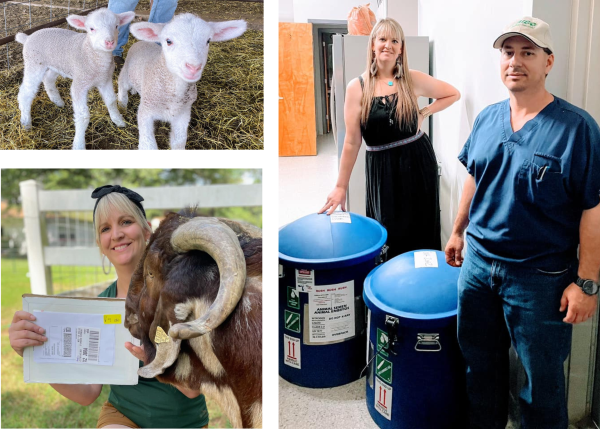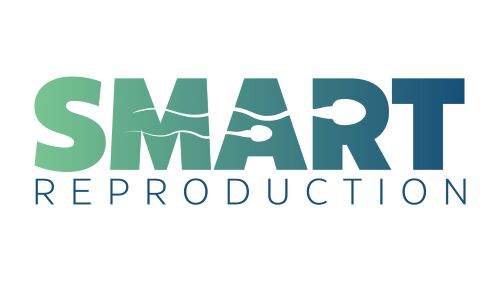Jonesboro’s SMART Reproduction has won a $274,996 research seed grant from the National Science Foundation on its first try.

CEO Brittany Scott says the idea to apply came from a conversation with the Arkansas Small Business and Technology Development Center that introduced her to America’s Seed Fund, the Small Business Innovation Research and Small Business Technology Transfer programs.
The center’s innovation consultants, Karen Bergh and Catherine Corley, encouraged SMART Repro to seek SBIR/STTR non-dilutive funding to support its innovative work.
“This award is entirely due to a chance conversation with ASBTDC,” Scott said.
Heeding the consultants’ advice, SMART decided to apply for research-and-development funding through multiple agencies.
With the NSF win under its belt, the company is now targeting the U.S. Department of Agriculture and the National Institutes of Health.
“Karen and Catherine’s mentorship and direct support have inspired SMART to submit a USDA and NIH SBIR Phase I proposal in 2024,” said Scott.
Prepared for Phase I
The company is developing the world’s first non-invasive tool for evaluating the viability of sheep and goat embryos.
The tool will enable embryologists to turn photographic images into valuable insights for domestic sheep and goat production, using machine learning, or ML, models that will be tested during the NSF Phase I project.
With over 100 international customers, SMART Reproduction is the first U.S.-based business to receive certification for the multi-country export of small ruminant semen and embryos.
SMART’s products, manufactured in Jonesboro, have been used to improve indigenous goat populations overseas, fostering sustainable local protein production systems in countries including Nepal and Brazil.
“I am incredibly excited that the National Science Foundation recognized the value of our project as it directly and positively impacts the health and welfare of the American public,” said Scott.

Fast and Accurate Embryo Analysis
Every year, the United States imports $1.5 billion of sheep and goat meat and milk to meet the growing demand for small ruminant protein.
The U.S. has a smaller sheep and goat population compared to countries such as Australia and New Zealand, from which most of the U.S. supply is sourced.
As a result, domestic producers recognize the value of embryo transfer and in vitro fertilization to help increase U.S. small ruminant production.
According to the Embryo Technology Society, the number of in vitro sheep and goat embryos produced rose 443% and 279%, respectively, from 2020 to 2021.
But with a limited number of embryologists available, the demand for these services is far outpacing the rate at which new professionals can be trained. With each failed embryo costing producers nearly $200 and at least 30 days of labor, there is high demand for a fast, reliable method of determining embryonic viability.
In addition to developing training curricula for new embryologists, SMART Repro is addressing this deficit and increasing U.S. production capacity by developing innovative, scalable, and accessible products.
A Smart Solution
Unlike traditional methods of determining an embryo’s health that are either too disruptive or too rudimentary, ML technology will be used to assess the embryo through non-invasive image analysis.
“Current embryo health analysis relies on the International Embryo Transfer Society morphological classification system, which has remained unchanged for over 40 years,” Scott said. “These methods are subjective, rely on the experience and skill of the examiner, and fail to convey critical, detailed information regarding the embryo’s biochemical, metabolic, and genetic status.”
Armed with actionable data, embryologists will be able to better determine whether an embryo will result in a successful pregnancy outcome.
“By seeking to provide American farmers with the tools to succeed, everyone flourishes,” Scott said. “As a result, the number of productive domestic small ruminant herds will grow, yielding job creation and increasing the American public’s access to quality, climate change-resilient protein.”
Aided by ASBTDC
Scott first engaged with ASBTDC in 2022 upon the advice of her banker. She reached out to the local center at Arkansas State University for a review of business and financial strategy for her three companies, leading to her participation in the office’s SmartGrowth program.
She also learned about the range of innovation services available through the center’s statewide network, and connected with Corley and Bergh, based at ASBTDC offices in Fayetteville and Little Rock, respectively.
“Their unwavering efforts and belief in our organization have opened our eyes to possibilities outside our initial business model,” said Scott. “The services provided by ASBTDC drive measurable economic development in Arkansas and are a stellar example of what government-led small business initiatives achieve.”
While the majority of SBIR applicants do not win the first time they apply, the technical assistance and educational opportunities provided by ASBTDC helped SMART Reproduction beat the odds.
In particular, Scott and other members of the SMART team attended the 2024 America’s Seed Fund Road Tour stop in Little Rock hosted by the center. There, they met face-to-face with multiple agency SBIR decision makers, who offered encouraging feedback.
Most recently, SMART was selected for the Lab2Launch Accelerator summer 2024 cohort led by ASBTDC and the Arkansas APEX Accelerator. The multiweek, fully virtual program assists Arkansas companies seeking USDA seed funding through SBIR/STTR.
To learn more about SMART Reproduction, visit the company’s website.

Story updated Jan. 28, 2025.